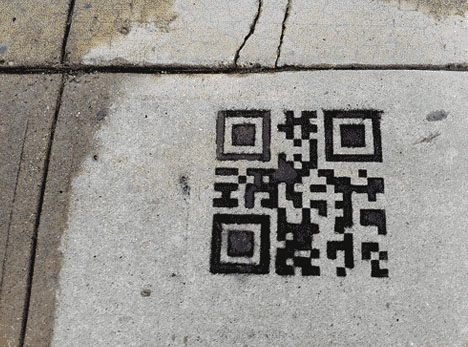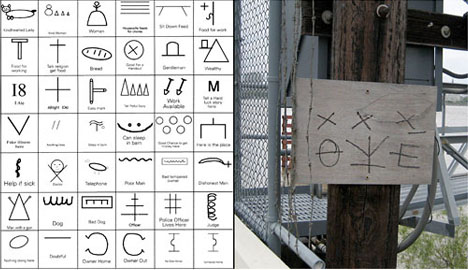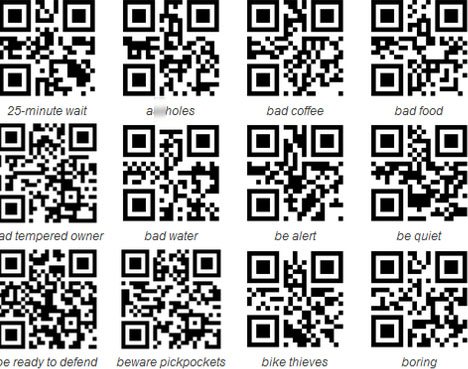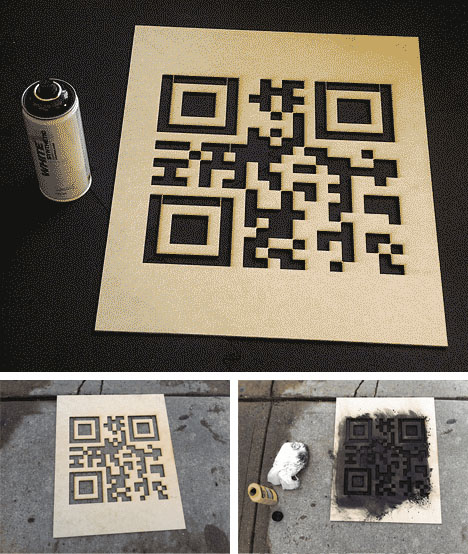This project tackles what is probably the last place anyone expect to find a digital-age intervention: the centuries-old tradition of the mobile and homeless communicating via shorthand markers, left to denote different risks and advantages to illicit living spaces.
From its creators at Free Art & Technology: “These stencils can be understood as a covert markup scheme for urban spaces — providing directions, information, and warnings to digital nomads and other indigenterati. We present these as modern equivalents of the chalk-based “hobo signs” developed by 19th century vagabonds and migratory workers to cope with the difficulty of nomadic life.” (Hobo signs via Sources: Fran DeLorenzo (left),Wikipedia (right).
But it also goes beyond the conventional messages once conveyed: “Indeed, our set of QR stencils port a number of classic hobo annotations to the QR format (“turn right here”, “dangerous dog”, “food for work”) as well as some new ones, with a nod to warchalking, that are specific to contemporary conditions (“insecure wifi”, “hidden cameras”, “vegans beware”).”
As ingenious as this all is, the question, of course, remains: even in an age where almost everyone has a cellular phone, how many truly nomadic peoples have one? The answer, though, may be: more than we realize.



